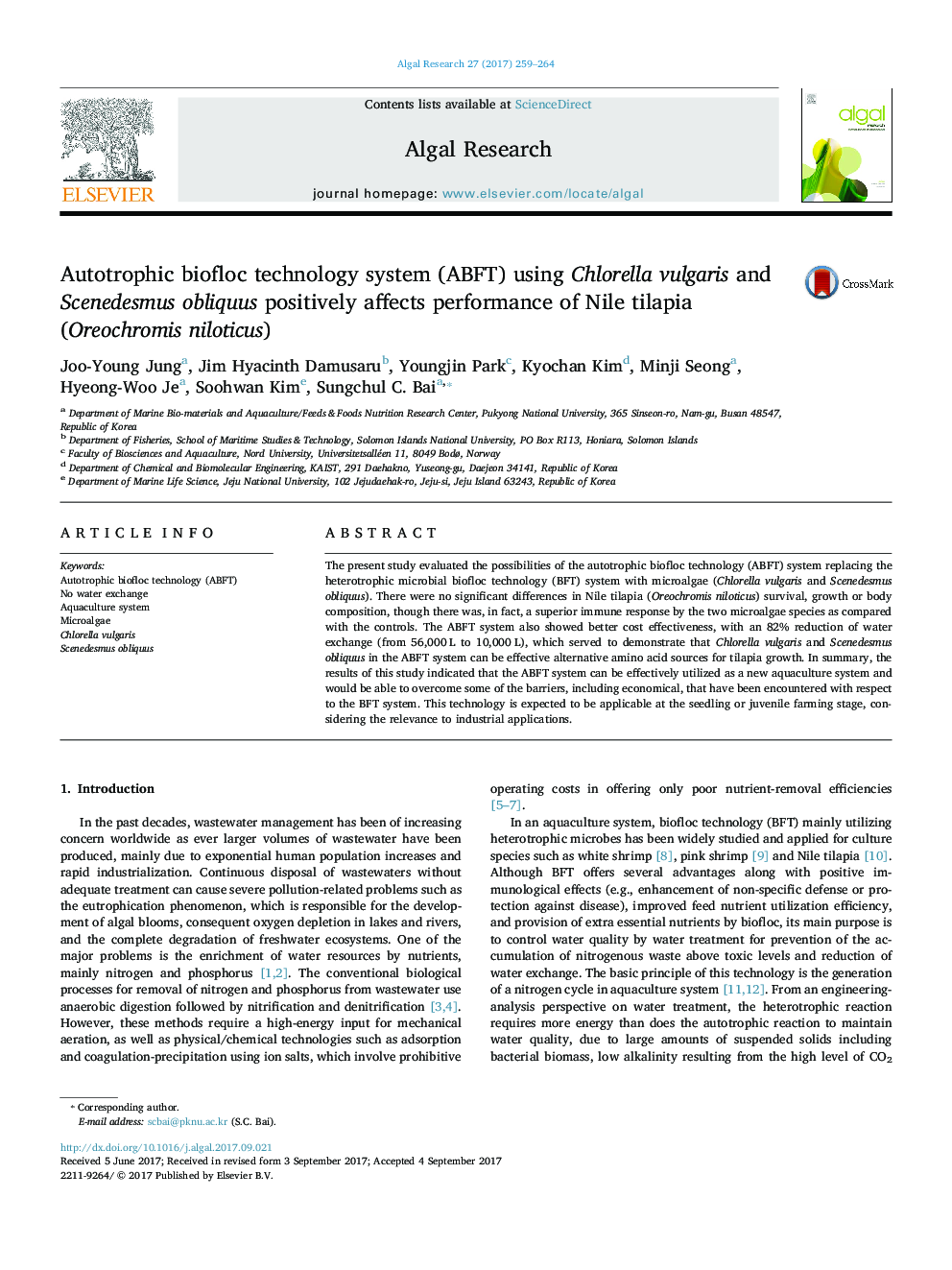| Article ID | Journal | Published Year | Pages | File Type |
|---|---|---|---|---|
| 5478559 | Algal Research | 2017 | 6 Pages |
Abstract
The present study evaluated the possibilities of the autotrophic biofloc technology (ABFT) system replacing the heterotrophic microbial biofloc technology (BFT) system with microalgae (Chlorella vulgaris and Scenedesmus obliquus). There were no significant differences in Nile tilapia (Oreochromis niloticus) survival, growth or body composition, though there was, in fact, a superior immune response by the two microalgae species as compared with the controls. The ABFT system also showed better cost effectiveness, with an 82% reduction of water exchange (from 56,000Â L to 10,000Â L), which served to demonstrate that Chlorella vulgaris and Scenedesmus obliquus in the ABFT system can be effective alternative amino acid sources for tilapia growth. In summary, the results of this study indicated that the ABFT system can be effectively utilized as a new aquaculture system and would be able to overcome some of the barriers, including economical, that have been encountered with respect to the BFT system. This technology is expected to be applicable at the seedling or juvenile farming stage, considering the relevance to industrial applications.
Related Topics
Physical Sciences and Engineering
Energy
Renewable Energy, Sustainability and the Environment
Authors
Joo-Young Jung, Jim Hyacinth Damusaru, Youngjin Park, Kyochan Kim, Minji Seong, Hyeong-Woo Je, Soohwan Kim, Sungchul C. Bai,
